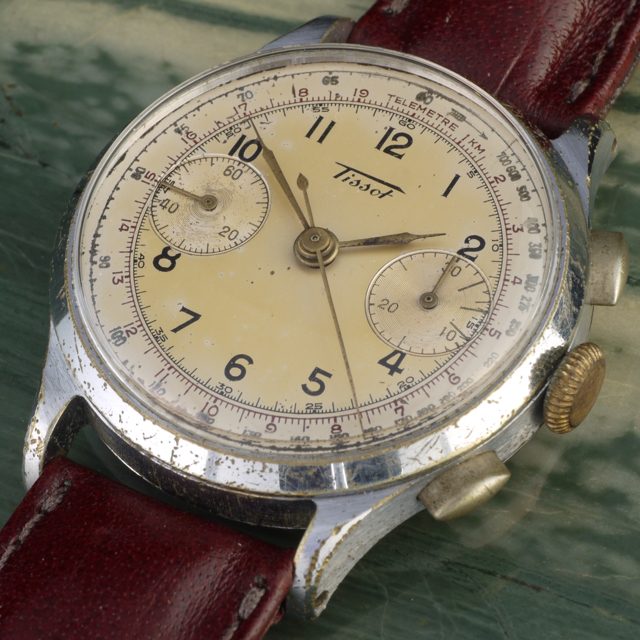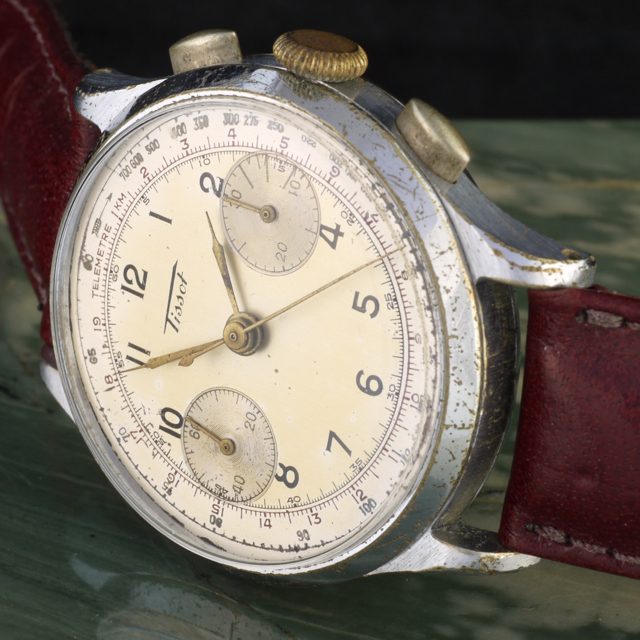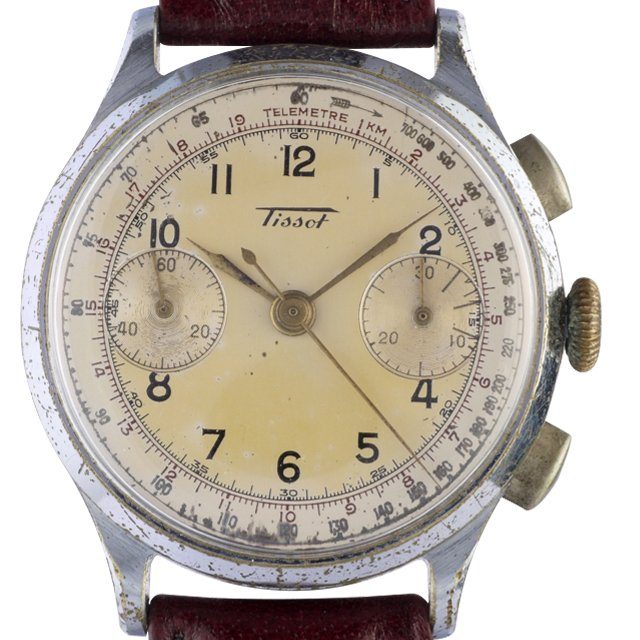


Tissot Chrono Tachy-Telemeter
RCA demonstrates a new simplified electron microscope that magnifies up to 100,000 times1941 Tissot Chronograph Tachymeter Telemeter.
A telemeter scale measures the distance between the user of the watch and the event seen and heard. It was used extensively to calculate when artillery fired. When you saw the light of the shot of the artillery, you would push the start button and push the stop button when the thunder was heard. The number shown in the scale refers to the distance.
A tachymeter scale measures how fast an object is moving. The scale can be found either on the dial or in the bezel. Most tachymeters start at 400 and end at 60, but some models can show different numbers. Its very simple to calculate the speed: just mark a point and push the start button. After the object has moved for one kilometer (or mile), push the stop button. The number indicated by the hand shows the speed of the object.
Tissot was founded in 1853 in Switzerland offering the first mass-produced pocket watch in that year. They went on to introduce a number of firsts: first anti-magnetic watch, first watch made of stone, wood and plastic.
Interestingly, Tissot merged with Omega back in 1930. Lemania, the movement maker joined the group 2 years later and became the chronograph movement maker for the brands. Having a captive chronograph maker enabled both Omega and Tissot to become official timing partners for many events such as the Olympics, Formula 1 and other sporting events. Tissot and Omega used a lot of similar or even same movements over the years. At times, Omega used a slightly more advanced version or one with more decoration – think of it like VW and Audi. Omega, Longines and Lemania have been under the Swatch Group since 1983.
